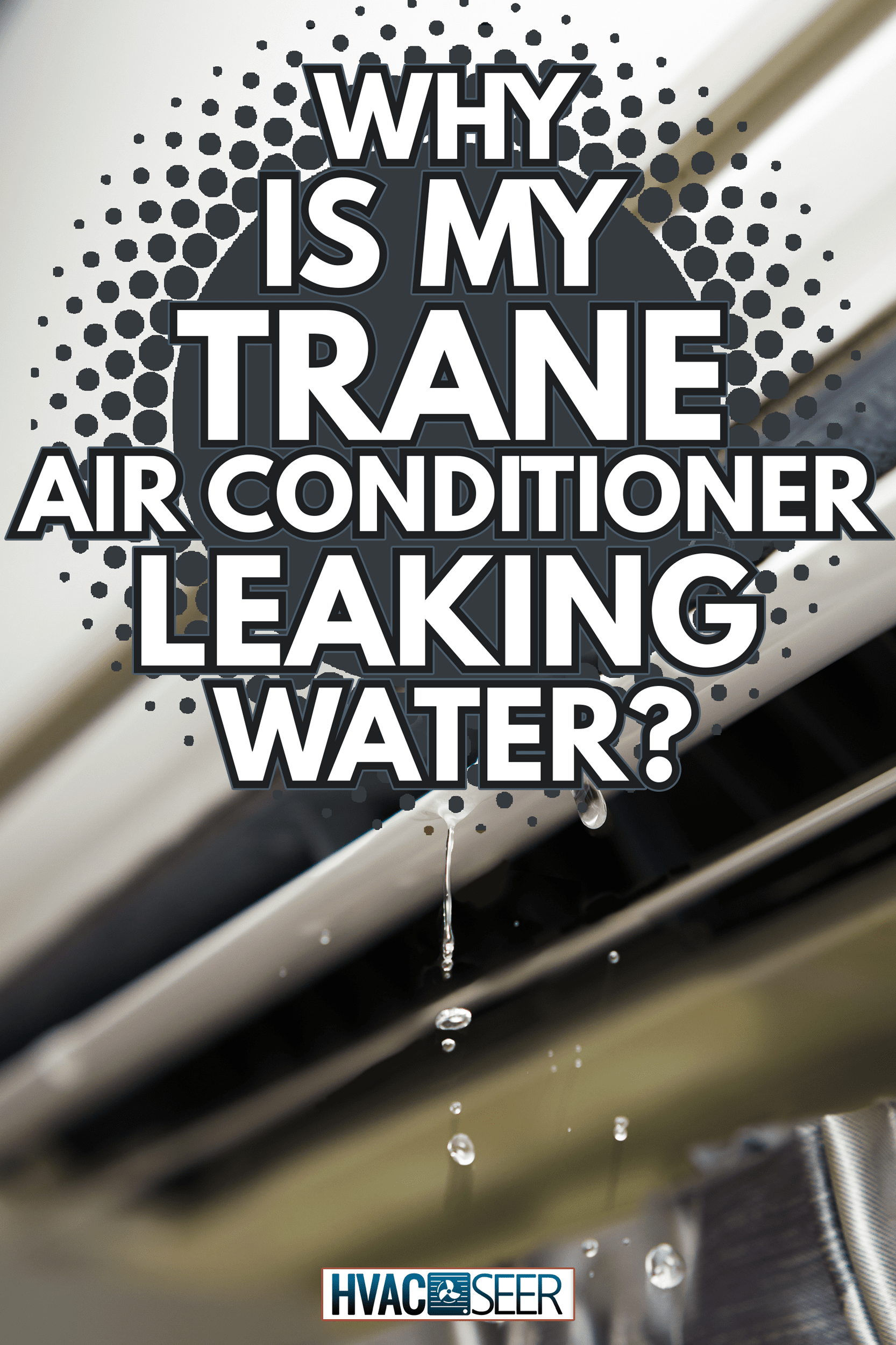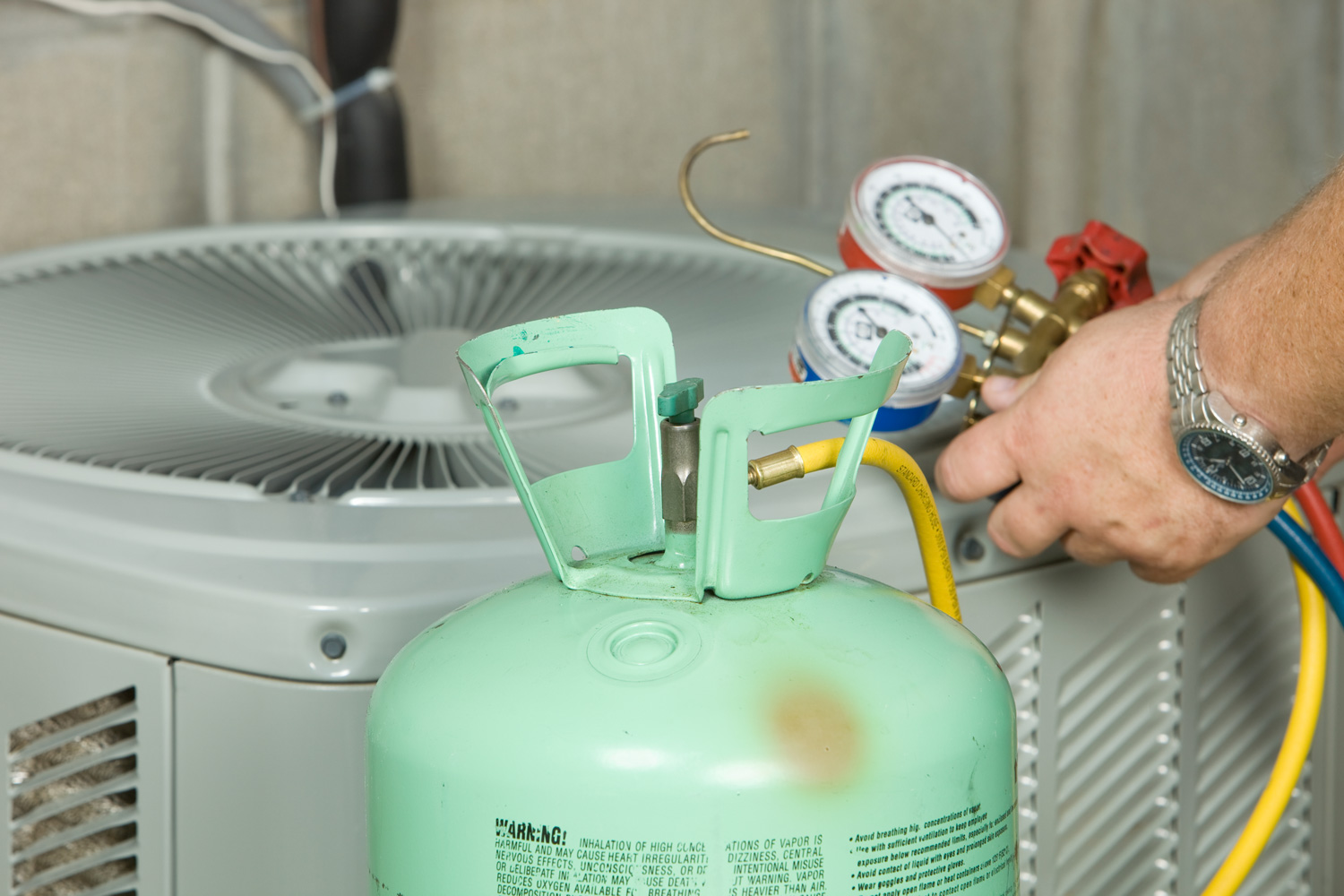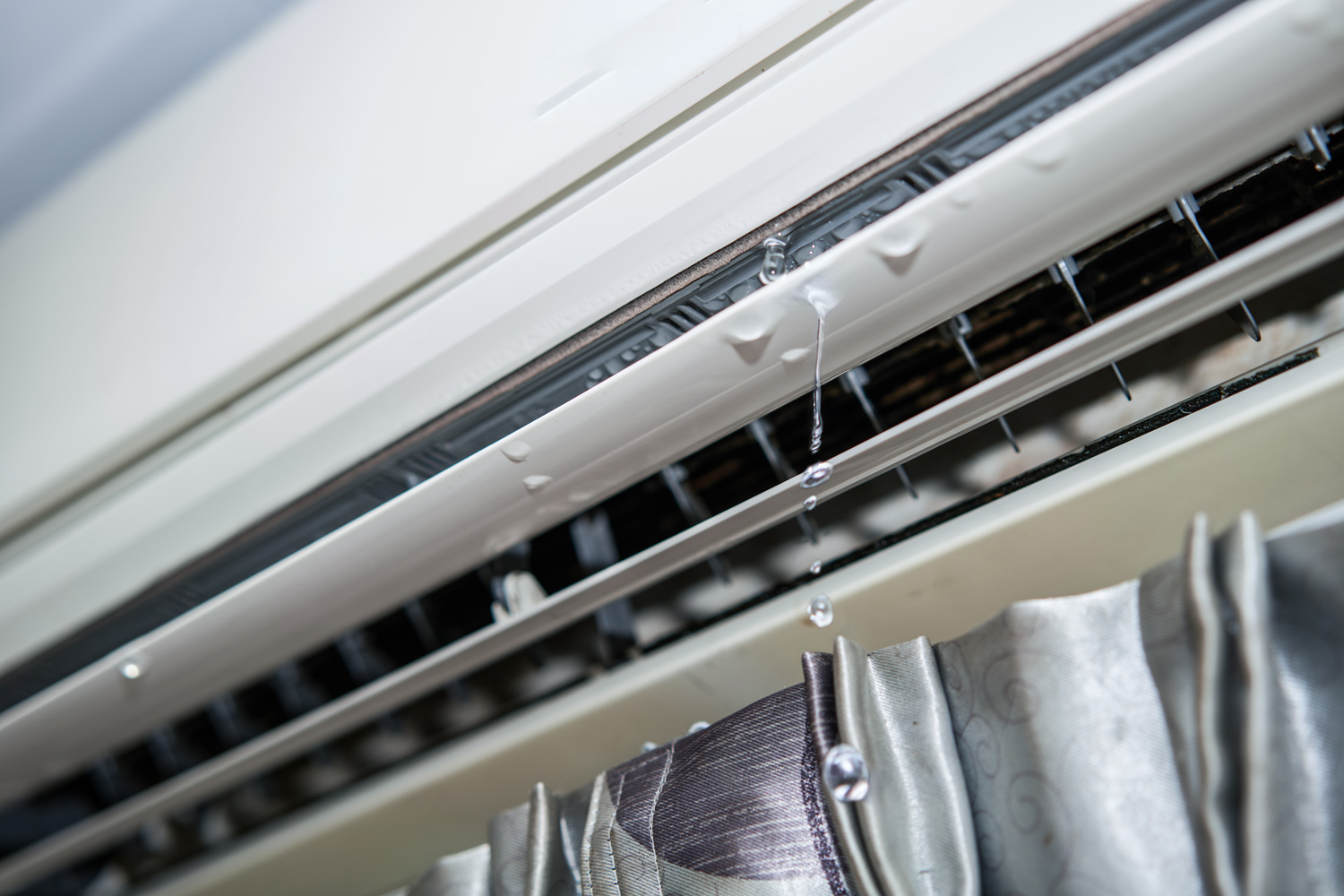Finding puddles on your floor from the leaks of your Trane air conditioner can be a huge headache. While leaking is the most common issue ACs face, you may be wondering what causes it and how to fix it. We've done our research and gathered information from HVAC experts to give you the answer.
There are a few reasons why your Trane air conditioner may be leaking water, including:
- Dirty AC filter
- Clogged condensate drain line
- Damaged drain pan
- Low refrigerant levels
- Broken condensate pump
Keep reading as we discuss each of these issues in-depth and give you advice on how to fix them. We'll also answer more of your questions about AC leaks, so stay tuned!

5 Reasons Why Your Trane Air Conditioner Is Leaking Water

If left untreated, a leaking Trane air conditioner can cause major water damage to your home and become an overall nuisance. It can also lead to mold growth which can compromise your health.
This is why it's important to get to the root of the problem and fix the issue as soon as possible. To help you do this, we've narrowed down a list of the five possible reasons why your Trane AC is leaking. Take a look below:
1. Dirty AC filter
One of the most common culprits of AC leaks is a dirty filter. This part is responsible for removing dust and dirt from the surroundings so that your AC only produces clean, cool air.
Over time, dust, dirt, and other debris can build up on the filter, reducing its function and blocking proper airflow. When this happens, the refrigerant of your AC will be unable to absorb heat from your home, and the temperature around your evaporator coil will drop, causing it to freeze over.
A frozen evaporator coil will not only lead to your AC producing warm air, but it can also lead to leaks as the ice formed on your evaporator coils will thaw and drip water.
How to fix it
What you can do in this case is to allow the evaporator coils to thaw, then change your AC filter.
To thaw out your evaporator coil, turn off the AC unit and shut it off at the circuit breaker to completely cut off the power supply. Leave the unit off for at least 24 hours. You can also set your thermostat to "fan only" to speed up the thawing process while leaving the unit running.
To change your AC filter, follow these steps:
- Locate the AC filter in the return air duct.
- Turn off the AC system at the thermostat.
- Remove the dirty filter and dispose of it.
- Insert the new filter. See to it that it points toward the air handler.
2. Clogged condensate drain line
A clogged condensate drain line can also lead to heavy leaking in your Trane air conditioner. Because the drain line removes condensation that can sometimes carry dust and dirt from the evaporator coil, it can get clogged with gunk and debris buildup.
This leads to its failure to drain water properly. As a result, water gets backed up and overflows into your home.
How to fix it
The simple solution to fix this problem is by unclogging the drain line with a shop vacuum.
See this shop vacuum on Amazon.
Here are the steps to do this:
- Turn off the AC system at the thermostat and switch off the circuit breaker connected to it.
- Locate the condensate drain pan under the unit.
- Remove standing water from the drain pan using a shop vacuum. You can also use towels to soak up the moisture.
- Clear out the clog with your shop vacuum.
- Find the access point on the drain line and remove the cover.
- Pour vinegar or hot water and dishwashing liquid into the drain.
- Leave the solution to sit for 30 minutes.
- Flush the drain line with water.
3. Damaged drain pan
The drain pan of your Trane air conditioner catches condensation from the unit. When dust clogs the drain, the pan will overflow and leak out. Now, this is easily fixed by following the steps above and removing water from the drain pan, unclogging the drain line.
However, it can also suffer from damage such as rust or cracks from use. Old air conditioners around 12-15 years old are extremely likely to have a damaged drain pan.
How to fix it
Some people choose to seal cracks in the drain pan with a water sealant, but experts caution against it since this solution won't last for long. Instead, it's best to simply replace the drain pan. The same is true if your drain pan is rusted.
Take note that in most AC models, there are two drain pans: the primary drain pan under the evaporator coils and the secondary drain pan under the unit.
In some models, the primary drain pan will be screwed into place, in which case you can remove and replace it on your own. In others, it will be welded into the unit, in which case you'll have to leave the replacement job to an HVAC professional.
Here's a step-by-step guide on how to replace the primary drain pan:
- Turn off the AC system and switch off the circuit breaker connected to it.
- Remove the access panel to get to the evaporator coils.
- Disconnect the drain line with pliers or a wrench.
- Detach the drain pan and set it aside.
- Place in the new drain pan and secure it into place.
- Reconnect the drain line.
- Put the access panel back and restore power to the AC.
4. Low refrigerant levels

As with a dirty filter, low refrigerant levels can also cause your evaporator coils to freeze over.
Why does this happen? The refrigerant in your Trane air conditioner absorbs heat from the surroundings and takes it through the compressor and evaporator coils of the unit to produce cool air.
When refrigerant is low, it won't absorb heat, and the evaporator coils will freeze. Ice buildup on the coils will thaw and melt into leaks.
Other signs that your AC is running low on refrigerant include:
- Warm air from the AC
- Higher electricity bills
- Longer time to cool the house
How to fix it
The solution to this issue is to refill your AC refrigerant. Make sure to check your manual for the type of refrigerant your AC requires so it can run efficiently again without any issues. While you can add refrigerant to your unit on your own, this is a job best left to professionals.
Watch the video below to learn how to refill your AC's refrigerant by yourself! Take note, though, that the instructor in the video is not working specifically with a Trane air conditioner.
5. Broken condensate pump
Condensate pumps are typically found in air conditioners installed in the basement since the unit would need extra help to carry water outside.
When the condensate pump breaks or fails due to old age or for any other reason, the water can no longer be pushed outside. This leads to the unit leaking water inside your home.
How to fix it
You can determine whether a broken condensate pump is responsible for your AC leaking by inspecting it for damage. Locate it first by seeing where the drain pipe leads; you can typically find the condensate pump just above the floor.
Check to see whether there are any signs of damage in the condensate pump. You can also use an ohmmeter to assess its function.
If your condensate pump is damaged, there's no way to fix it on your own. You will have to get it repaired or replaced by professionals.

Should I turn off my AC if it's leaking?
Yes! While it's not completely dangerous to leave your AC running if it's leaking, the best course of action is still to turn it off. This will help you prevent damage to the unit and allow you to assess the source of the leak, so you can resolve the issue as soon as possible.
How much water should an AC leak?
In hot or humid weather, you can expect your AC to drain anywhere from 2 to 20 gallons per day. However, it shouldn't leak out and create puddles in your home.
Is bleach or vinegar better for AC drain line?
The jury's still out on whether bleach and vinegar are good for your AC drain line, as they both can be corrosive to metal. Vinegar is the safer option, however, since it's less likely to harm the drain line.
The Wrap-Up

If your Trane air conditioner is leaking, don't ignore it! The issue won't resolve by itself. Instead, you can refer to this post to figure out where the leak is coming from and fix it. This way, you can enjoy cool air from your AC without any issues!
Learn more about air conditioner leaks and draining techniques by reading these informative articles:

